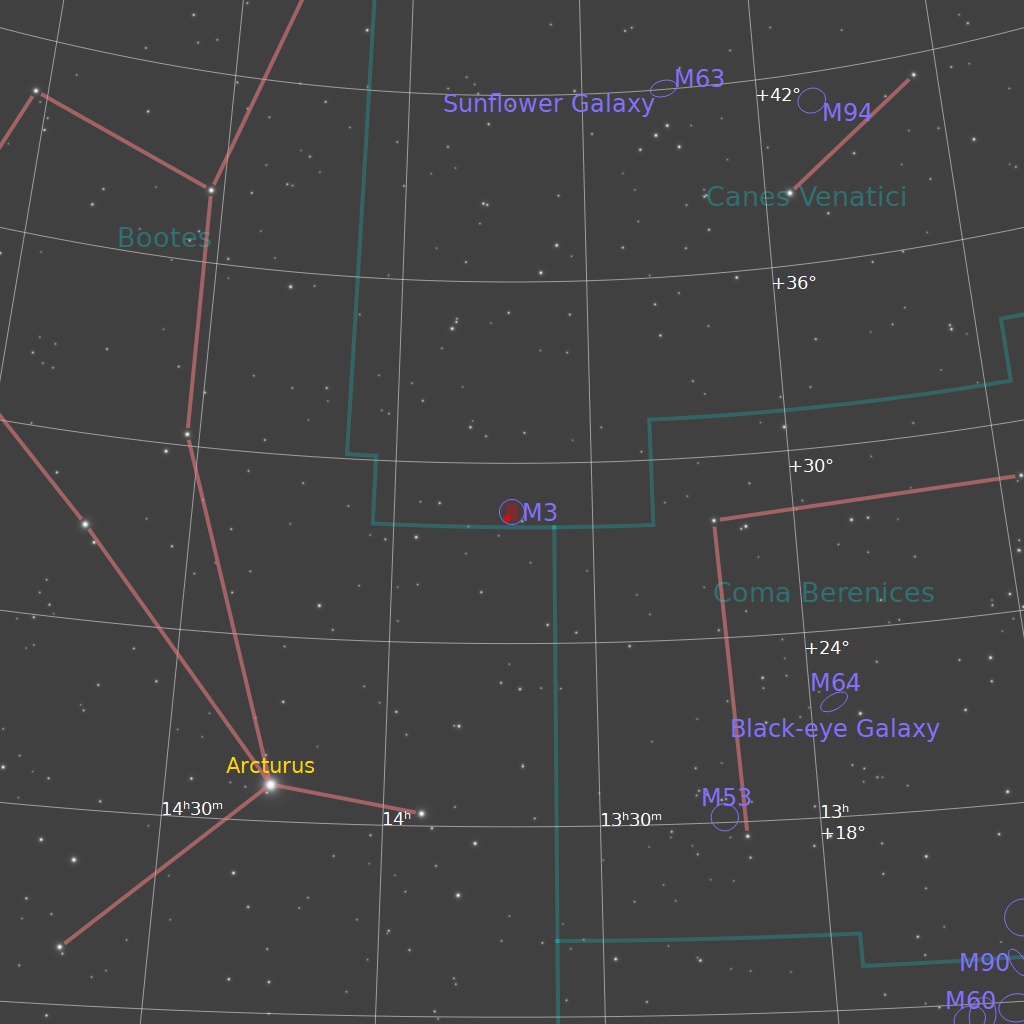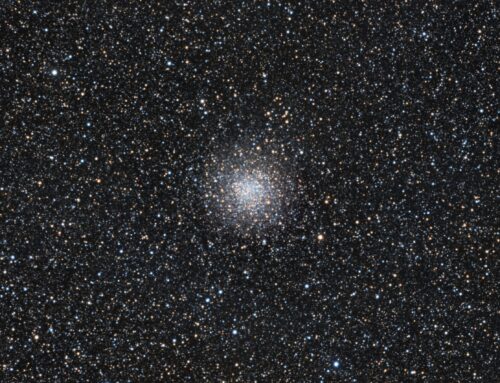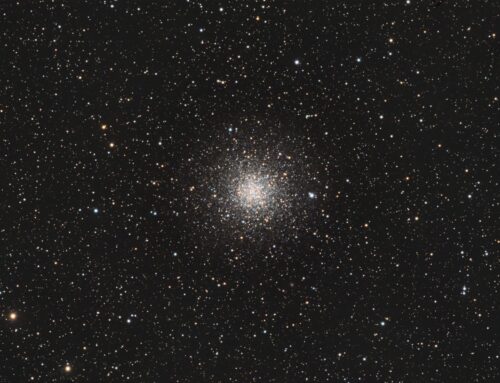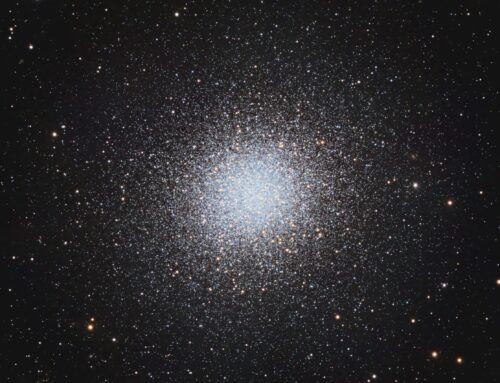Messier 3
Click image for full size version
April 25, 2024
Messier 3 (M3) is a bright globular cluster in the southernmost part of the constellation Canes Venatici (the hunting dogs). I have imaged this object several times, including May 2017 and May 2019. However, the 14″ telescope I’m using now gives it a whole new depth compared to previous versions.
Unlike some other objects in the Messier catalogue, this object was actually discovered by Messier, in 1764. It is one of the largest globulars, containing about half a million stars. It lies about 34,000 light years away and measures about 180 light years across. Are you feeling old today? The estimated age of this cluster is more than 8 billion years! Now go celebrate your relative youth, no matter how old you are! If you have binoculars, you can see this object easily in a moderately dark sky as a hazy patch. Larger and larger scopes reveal more detail towards the core, and fainter stars around the outside.
Look carefully and you can also see several galaxies throughout the field. Perhaps the most obvious is below and to the right of the brightest star in this image, in M3’s outer regions.
Tekkies:
Acquisition, focusing, and control of Paramount MX mount with N.I.N.A., TheSkyX. Guiding with PHD2. Primalucelab low-profile 2″ Essato focuser and ARCO rotator. Equipment control with PrimaLuce Labs Eagle 4 Pro computer. All pre-processing and processing in PixInsight. Acquired from my SkyShed in Guelph. Data acquired under little to no moonlight and average transparency and seeing between March 28-29, 2024.
Celestron 14″ EDGE HD telescope at f/11 (3,912 mm focal length) and QHY600M camera binned 2×2 with Optolong filters.
14 x 1m Red = 0hr 14m
15 x 1m Green = 0hr 15m
16 x 1m Blue = 0hr 16m
159 x 1m Lum = 2hr 39
Total: 3hr 24m
Preprocessing: The WeightedBatchPreProcessing script was used to perform calibration, cosmetic correction, weighting, registration, local normalization, integration and Drizzle integration of all frames.
RGB master: A master RGB image was made from the Red, Green and Blue masters using ChannelCombination in RGB mode.
Synthetic Luminance: A SynthL was made by integrating the three masters, weighted by SNR, with no pixel rejection
Gradient Removal: DBE was used to remove gradients from the RGB and SynthL masters.
Colour Calibration: SpectroptometricColorCalibration was used to calibrate the RGB master.
Deconvolution: BlurXterminator was applied to the RGB and SynthL masters with Automatic psf , star sharpening set to 0.5, and non-stellar set to 0.5.
Linear Noise Reduction: NoiseXterminator was applied to the RGB and SynthL masters with settings Amount=0.9 and Detail=0.25
Stretching: HistogramTransformation was applied to the RGB and SynthL masters to make pleasing images. Approximate background level after stretch was 0.1 for SynthL and 0.08 for RGB.
Nonlinear Processing
Combinining SynthL and RGB: LRGBCombination was used to replace the lightness channel of the RGB image with the SynthL.
Nonlinear Noise Reduction: NoiseXterminator was used to reduce noise in the background areas of the SynthRGB master with Amount=0.9 and Detail=0.15.
Re-stretch: HistogramTransformation was used to boost contrast by moving the dark point to the toe of the histogram and slightly decreasing the mid-point slider.
Final Steps: Background, globular cluster, and star brightness, contrast, hue, and saturation were adjusted in several iterations using CurvesTransformation with masks as required. ICCProfileTransformation (sRGB IEC61966-2.1; Relative Colorimetric with black point compensation) was applied prior to saving as a jpg. The finder chart was made using the FindingChart process.








Very nicely done, I cannot seam to get my stars as tight, yours are always so beautiful.